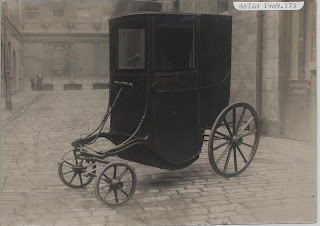 |
| Amy leading you through the history of lead |
‘Lead was to Romans what plastic is to us.’ (H.Eschnaver & M.Stoeppler, Wine – An Enological Specimen Bank, 1992)
This statement perfectly highlights the extensive and reliant use of lead by the Romans. It has a low melting point which creates an easy and cheap resource to utilise; it was desirable. In the written texts of the period and from archaeology we have distinguished that lead was used from plumbing to makeup and cookware – to name a few.
 |
| Roman pewter vessel discovered in the Spring |
Surely the Romans didn’t know it was poisonous if they utilised it so much? Incredibly, they did know. Cato the Elder (3rd-2nd BC) recommended the use of lead lined/coated vessels for food preparation as well adding it to wine and food as a sweetener and preservative. It leaves a sweet taste because of the formation of ‘sugar of lead’. Even though Vitruvius (1st BC) reported the dangers of lead, it was continually utilised.
 |
| Roman curse tablet describing the theft of a bracelet |
One of my favourite uses of lead at the Roman Baths, are the curse tablets. Many curse tablets have been recovered from the Sacred Spring. These were small sheets of lead with inscriptions of names or wrongdoings, offered to the goddess Sulis Minerva. The weight of the lead would guarantee the curse would sink down in the water to reach the goddess, and it was cheap enough for most people to buy.
 |
| Papal bulla of Pope Joh XXII |
The popularity of lead continued into the Medieval period. Some of its uses were: window came fragments, paint and alchemy. Some continued uses were weights, piping, and drink sweetening. One of the most interesting artefacts found in the Bath area is a lead bulla, a seal made of metal that would have been attached to a Papal Bull. On one side are the images of Saints Peter and Paul, on the other is the Pope’s name, Pope John XXII.
We move into the Post-Medieval period through to the modern day. Uses ranged from game pieces to paint, sweetener, and gasoline. Lead was still very prevalent in the 1600s-1800s and many people recorded poisoning from repeated exposure.
 |
| Lead crystal glass (photo credit: Wikimedia Commons) |
Lead was still utilised to make vessels, yet rather than for its sweetness, it was used to compose crystal glass. First used in the 1600s, this is a variety of glass where lead replaces the calcium. This process makes it easier to melt and improved the appearance with clarity and ease of decoration. Likewise, lead is often still used in the home through piping and paint, despite laws against such use in the 1970s.
Millenia after the Romans began to use it, lead is still considered practical despite its poisonous properties. How long will it endure?
Amy
Collections Volunteer







































